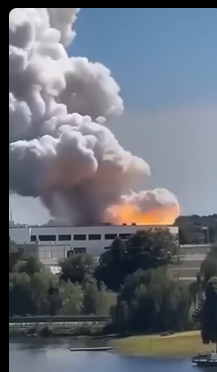
Recent chemical and industrial fires — including one in Newburgh, Indiana — have highlighted the critical importance of safety, preparedness, and public communication. When the blaze involving chemical materials broke out, authorities quickly issued shelter-in-place advisories to protect nearby residents as firefighters worked to contain the flames.
These alerts, though unsettling, are precautionary measures designed to minimize exposure to potentially harmful smoke or fumes. Officials emphasize that following such guidance can significantly reduce health risks during environmental emergencies.
Chemical fires differ from standard ones because they often involve toxic or reactive substances. Firefighters require specialized equipment and training to manage these situations safely, and air quality testing becomes an essential part of the response.
During such incidents, local agencies urge residents to rely only on verified information from official channels. Closing windows, sealing doors, and limiting outdoor activity are simple but effective ways to stay safe.
Misinformation can spread quickly during emergencies, which is why authorities stress avoiding unconfirmed social media reports that may cause unnecessary panic. Accurate communication helps both residents and responders act efficiently.
A recent fire in Springfield underscored the same lessons. Thanks to rapid emergency response, authorities prevented the spread of toxic fumes and avoided greater property damage.
These incidents also serve as reminders of the risks associated with storing or transporting hazardous materials. Communities and industries alike must prioritize prevention measures, such as regular safety inspections and proper containment protocols.
Ultimately, preparedness and cooperation are key. Staying calm, informed, and ready to follow instructions can make all the difference when facing sudden environmental hazards like chemical or industrial fires.